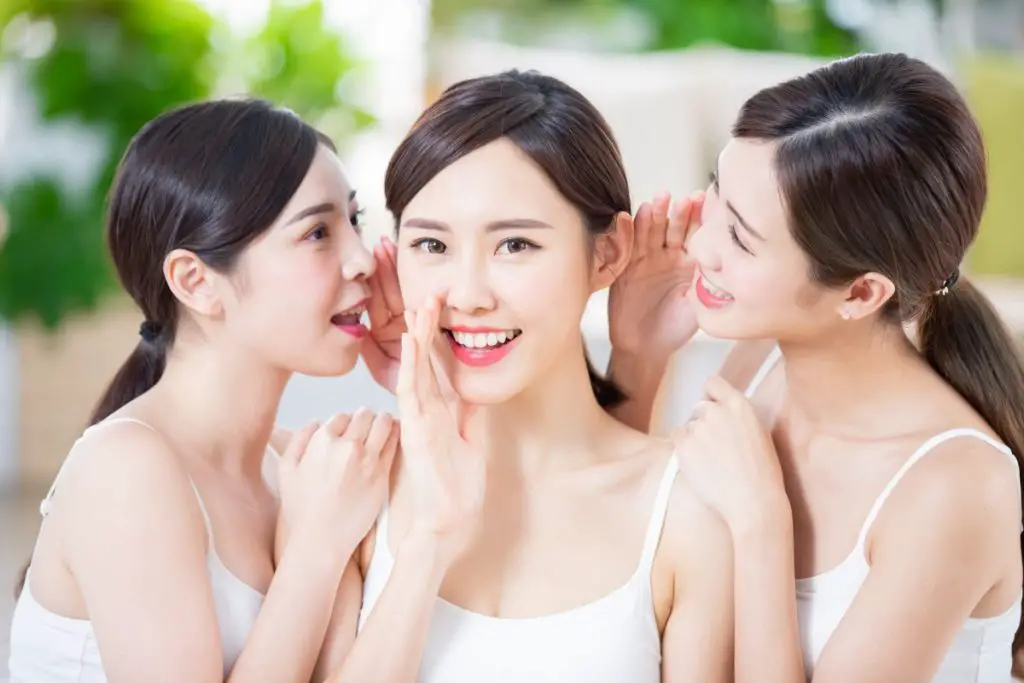
Generally, humans differ in multiple ways, such as height, skin complexion to immune systems.
Though some physical characteristics probably became widespread by chance, others gave some ethnicities an evolutionary advantage by natural selection.
For instance, it’s still quite a mystery why some Asians have less body hair, though a few theories have popped up over time.
Asians have less body hair because of their lower androgenic levels (stronger tolerance towards testosterone), their unique EDAR gene mutation, their variant Y-Chromosomes, and their quick adaptation to cold climate and warm environments clothing during ancient times.
The rest of this article will explore the proven and unproven theories related to this question in greater detail, digging deeper into the theories’ historical relevance and biological significance, and maybe debunk why Asians tend to have less body and facial hair, in a general sense.
Theory 1: Climate and Environmental Factors
On the whole, hair protects the skin in a sandy environment. And while sand increases friction on your skin, hair decreases it.
This could be a probable theory as to why people from deserts are hairier. On the other hand, East Asians tend to have less body hair, and their climate could be a contributing factor.
The theory is that since some parts of Asia are colder than others, it could have been an evolutionary deterrent to body hair.
The idea is that cold environments don’t suit body hair as it attracts water particles, which can freeze on you, which isn’t ideal for warmth.
However, climatic zones drastically changed during man’s history, and ancient Asians lived in a much colder environment. Furthermore, Asians are not the only ones with little body hair.
The indigenous people of America also have less body hair. This could be theorized that they could be descendants of Asian people that migrated to America over the Bering Land-bridge during the ice age.
In the same light, some anthropologists believe that most Chinese, Japanese, Pacific Islanders, and Eskimos evolved to have less hair to keep clean while wearing heavy clothes and furs during the ice age.
It is believed that some races maintained less hair than others, primarily due to how early they adopted clothing to deal with their climate. Humans that have long lived in climates that necessitated clothing for warmth have been losing body hair for more generations.
It’s highly probable that those ancient Asians had to contend with Himalayan cold and higher latitudes, which required them to adopt clothing very early to survive.
In principle, having less hair allowed ancient Asians to keep clean for longer periods without bathing.
Another theory related to climate and environmental factors is the water-ape-theory.
Some scientists believe that mankind lived for a while in water at a point or at least spent a good amount of their time in it. Practically, in water, furry skin is not required, as demonstrated by aquatic mammals.
So, it is possible that some ancient Asians spent a lot of time around water, and thus evolved to have less body hair.
As a stark contrast, this could explain why Arabians became hairy since they lived in sandy environments.
Another probable theory is that people from the Middle East didn’t need much clothing until desertification, since climate change altered their Mediterranean climate.
This resulted in a much harsher environment than it is today. This could explain why people from Mediterranean countries are often some of the hairiest since the lack of dramatic temperature variations meant that they never needed much clothing.
Theory 2: Androgenic Levels
As we continue the journey into the mystery of Asian body hair, another theory concerns Androgenic levels. Androgens, including testosterone, are the primary hormones that give men their male characteristics.
In essence, an Androgen deficiency means the body has lower levels of male sex hormones, particularly testosterone.
Furthermore, as androgen levels rise, more vellus hairs in the androgen-sensitive areas are converted into terminal hairs, leading to hirsutism. Hirsutism affects 70-80% of women with androgen excess.
So, Androgens prolong the growth phase of hair and promote vellus hair’s conversion to terminal hair.
It is believed that Asian men have less enzymes that convert testosterone into dihydrotestosterone. Ultimately, Dihydrotestosterone (DHT) is a form of testosterone that has a stronger virilizing effect on men.
This is because it has three times greater affinity to the androgen receptor than regular testosterone.
Stimulation of androgen-sensitive hair follicles is mediated by dihydrotestosterone (DHT) formed in these tissues by an alpha-reduction of testosterone.
This is a possible reason for increased body hair in some ethnic groups. Therefore, reduced tissue levels of DHT can result in less body hair.
Some studies have also shown that East Asian populations have lower androgen markers than Caucasians, which could explain why Caucasian people are generally hairier than the Chinese or Japanese, even though testosterone levels are similar.
So, the average Chinese man could have less facial and chest hair than an age-matched Caucasian man due to reduced testosterone conversion to DHT.
However, the core difference could be how sensitive their hair follicles are to those testosterone levels, in theory.
Theory 3: EDAR Gene Mutation
Theoretically, many of the distinguishing features of Asian people have lately been linked to a single gene mutation.
Some scientists found the EDAR gene mutation to be common in many East Asia populations. This Mutation was found in a gene for the ectodysplasin receptor or EDAR.
Thus signaling a pathway uncover the mysteries behind the development of hair, sweat glands, and other skin features.
So, they discovered that while human populations in Africa and Europe had one ancestral version of the gene, most East Asians had a derived variant, EDARV370A.
Scientists believe that Mutation occurred about 35,000 years ago in China and affects multiple bodily aspects, such as body hair.
Scientists found that Asian people with EDAR370A tended to have thicker hair fibers and more sweat glands on their fingers – theorizing that these traits could have arisen when EDAR 370A emerged.
Scientists also believe that as the EDAR gene attained higher frequency in an environment that was cold and dry, it could have fostered increased glandular secretions to achieve increased lubrication and reduced evaporation from exposed facial structures and upper airways.
This could have resulted in thicker hair, which is more sparse or lower hair density.
This could explain why many East Asians appear to have less body and facial hair.
Furthermore, some scientists think added sweat glands were a key driving factor for fixing the Mutation in the population.
However, it’s also possible the lower amounts of body hair were also sexually selected over time.
However, it’s still scientifically unclear why EDAR 370A was beneficial. It’s possible that the extra sweat glands could have them keep cool in the warm and humid Chinese climate.
Theory 4: Y-Chromosome Variation
Our final theory relates to the Y-Chromosome and the cold climate. Again, these are all hypothetical and not fully proven.
That said, there is a hypothesis that Y-chromosome Asians were trapped in a quasi-polar environment during the Ice Age.
Consequently, they are said to have evolved narrow eyelids to block UV radiation reflecting off the snow.
Furthermore, they are believed to have evolved to sweat less as sweating in polar conditions was technically a death sentence.
As a result, they are believed to have later evolved to have less body hair.
Conclusion
Scientists have not yet fully figured out exactly why some Asians are hairier than others. Typically, most point to environment or temperature, while others point to a stronger tolerance towards testosterone and genetic markers.
For now, it remains quite a mystery as to why most people of Middle Eastern, South Asian, and European descent tend to have more body and facial hair, while those of East Asian, Central Asian, or South-East Asian ancestry tend to have less.



